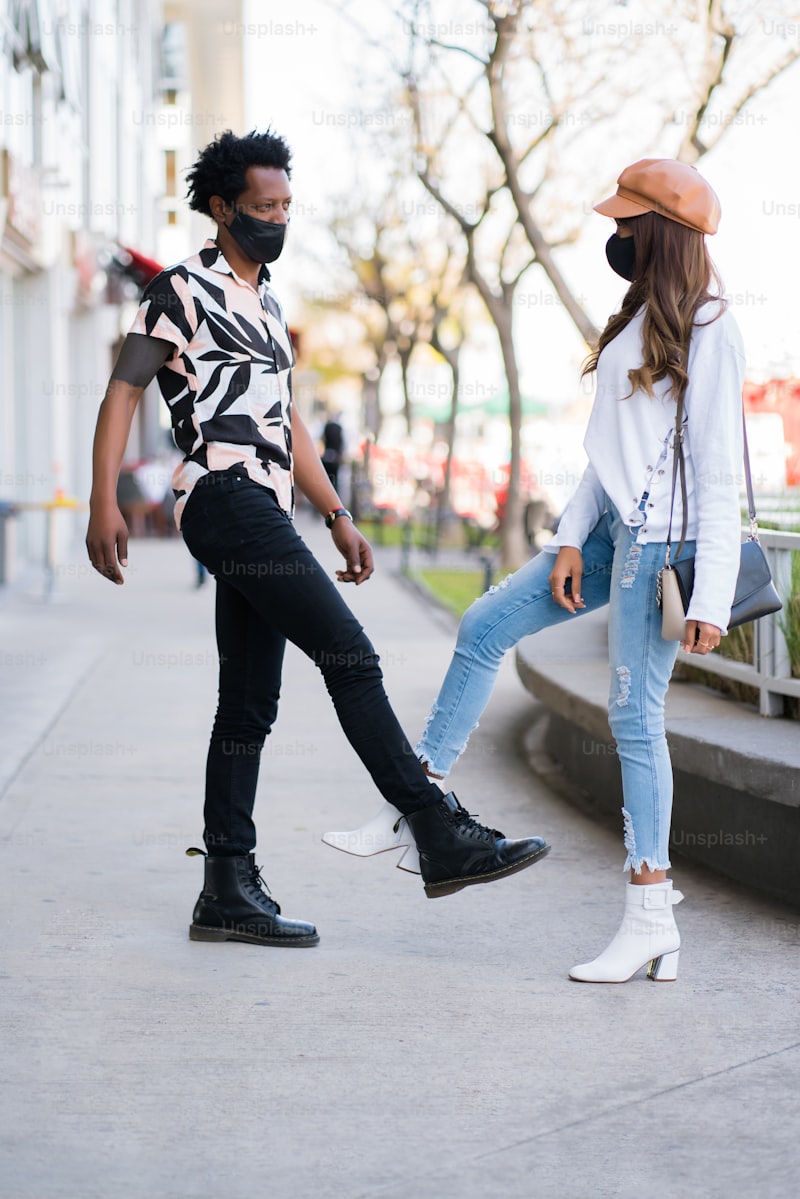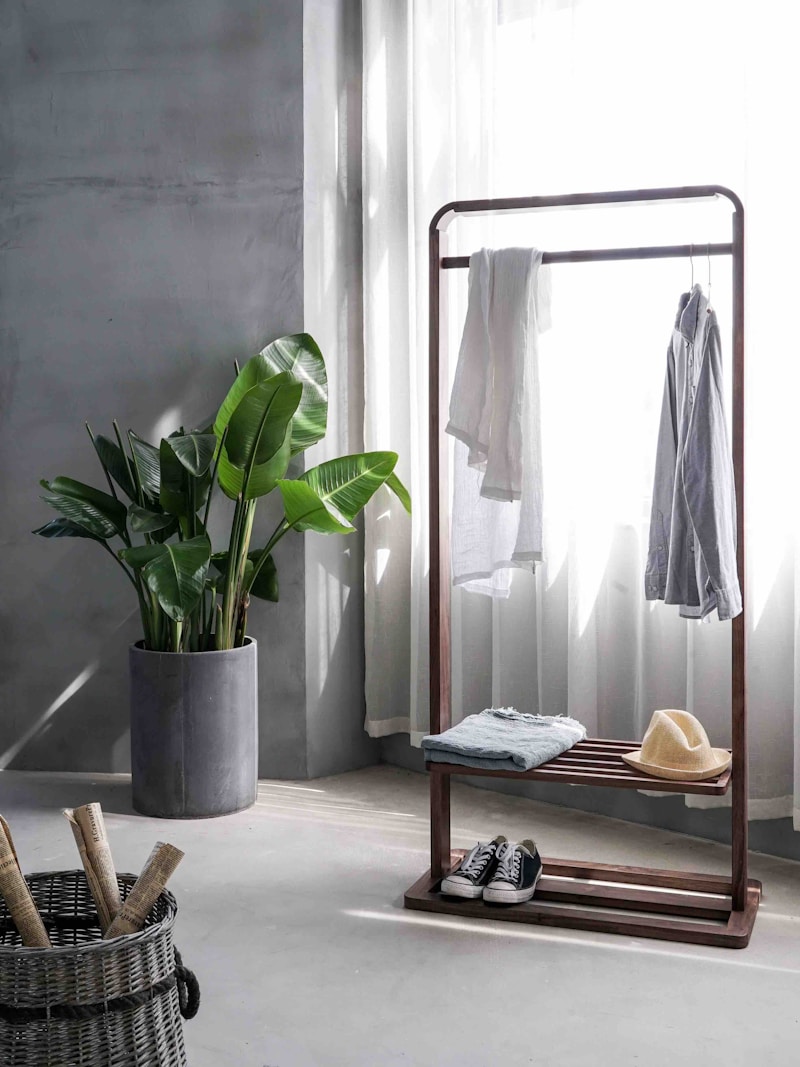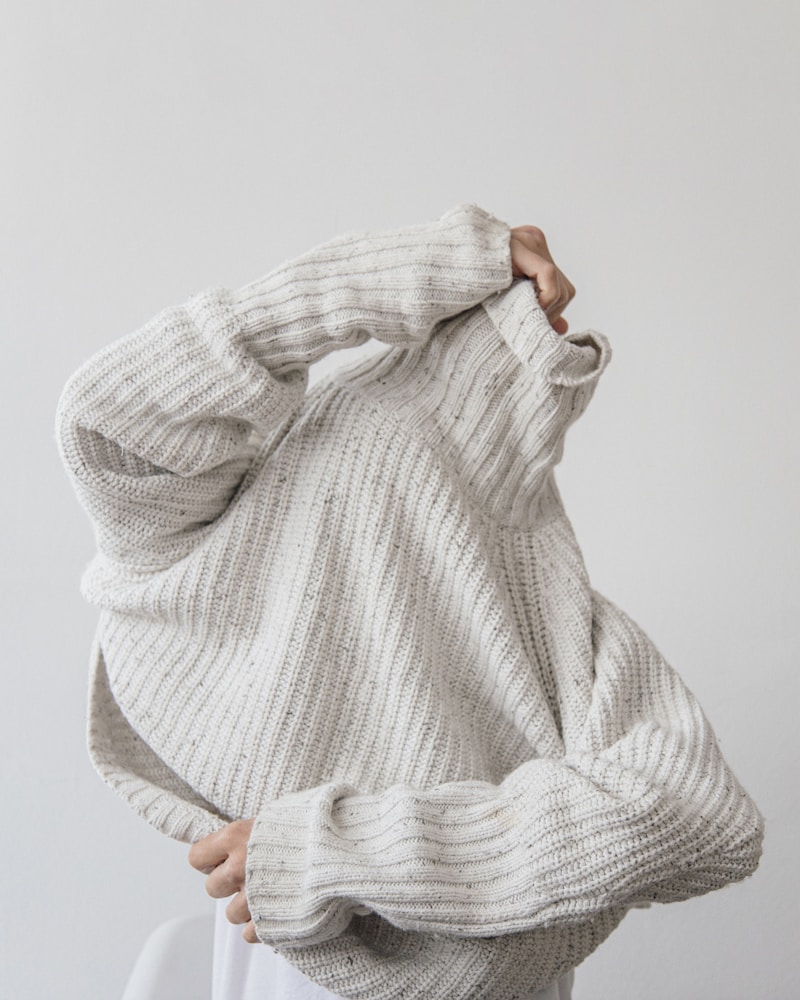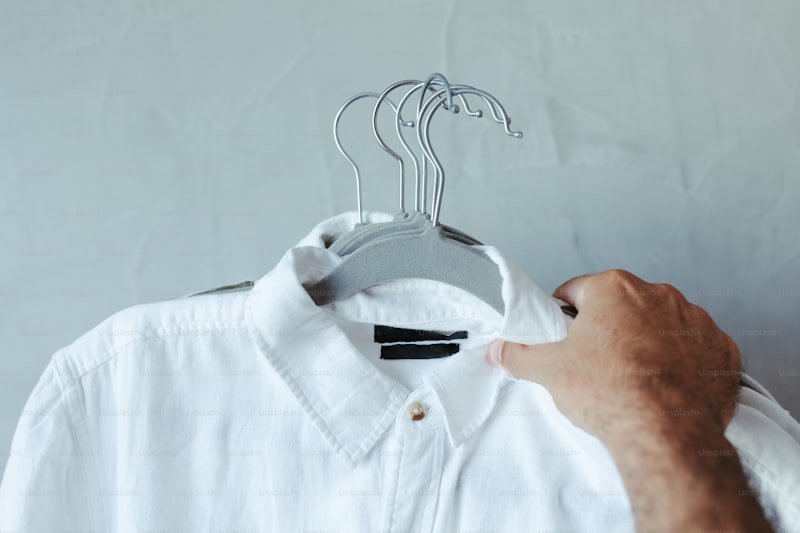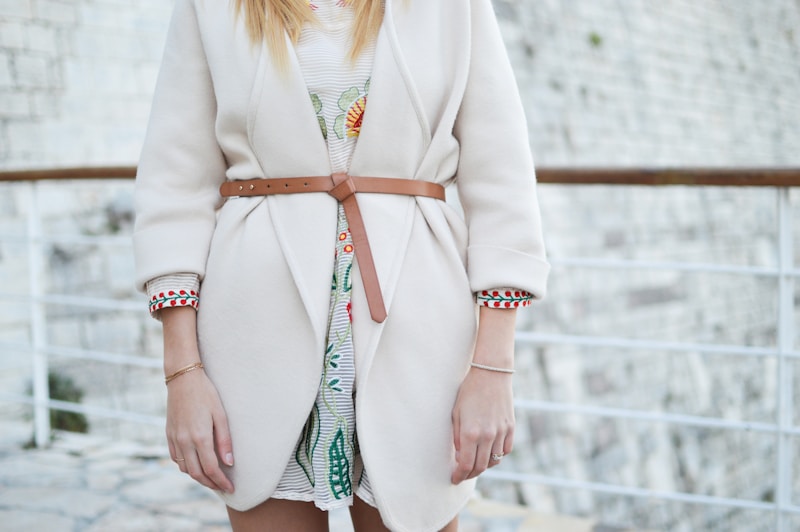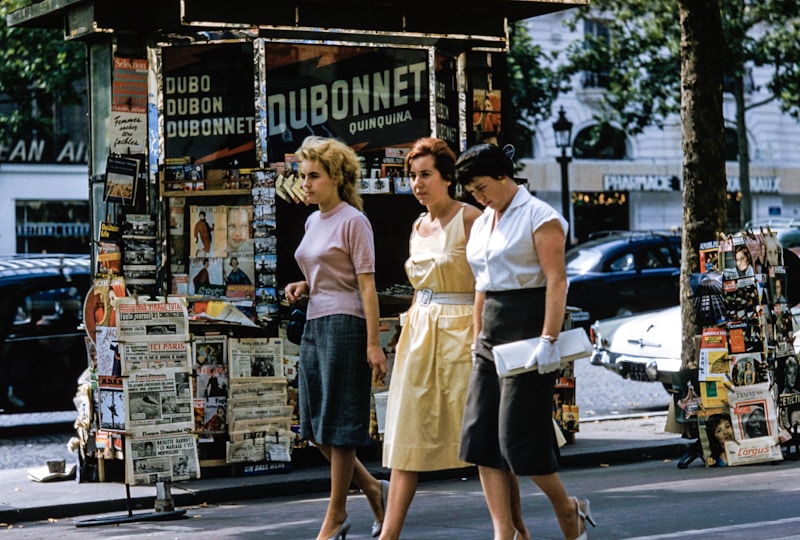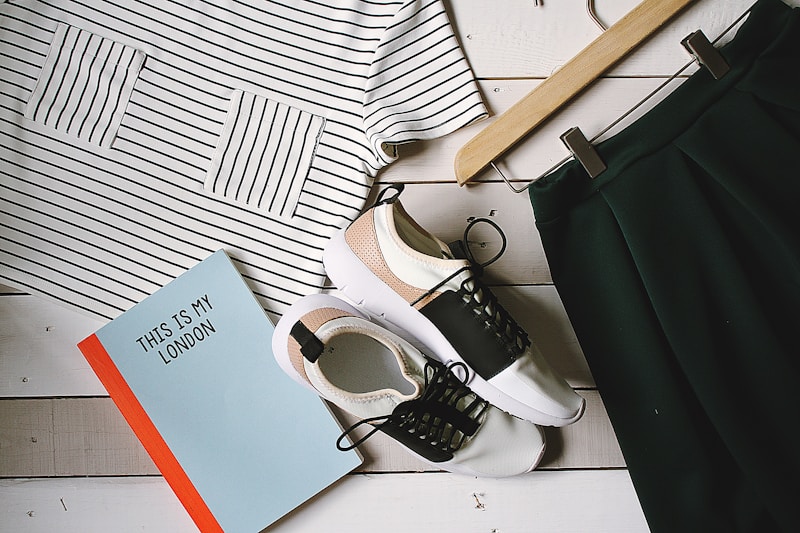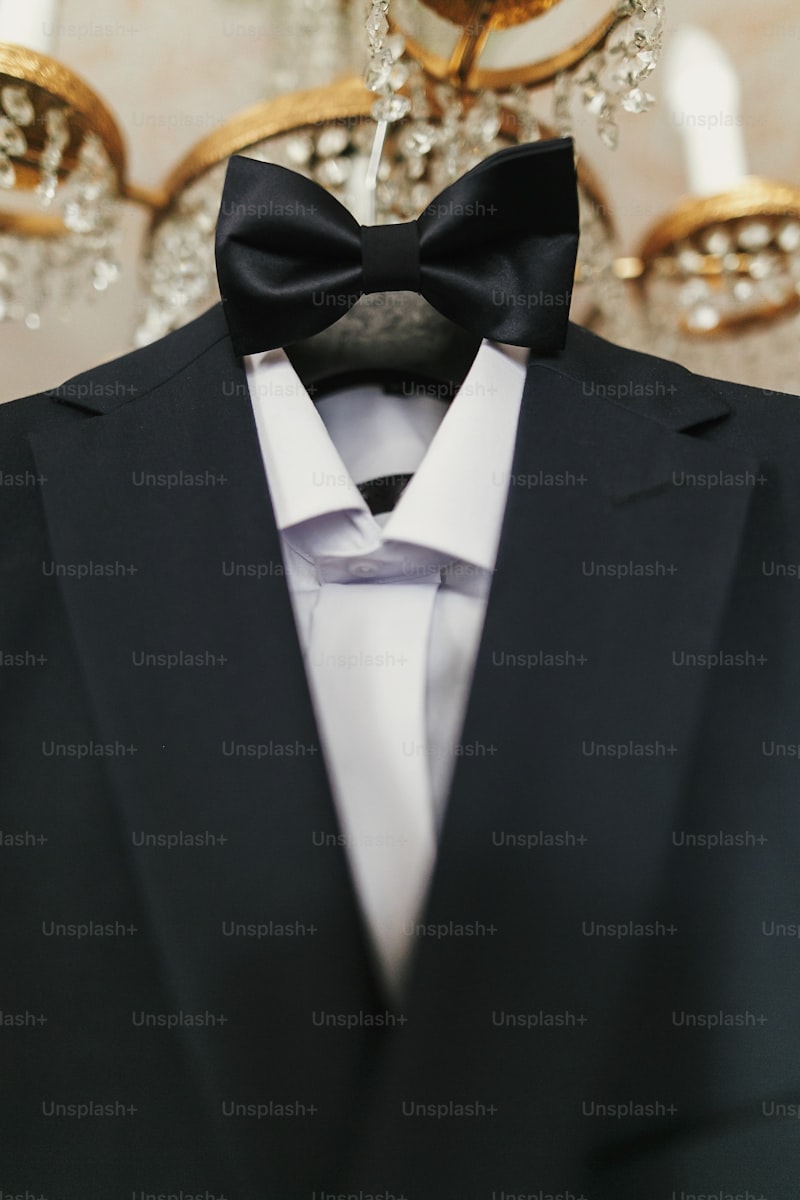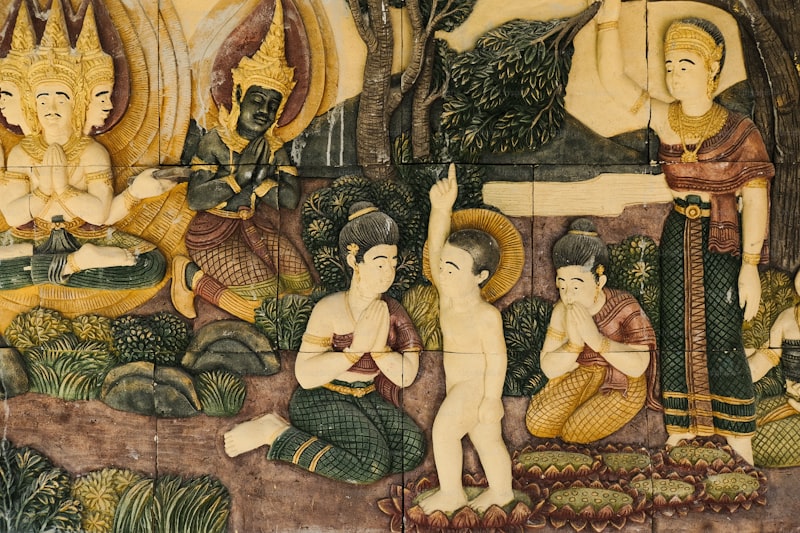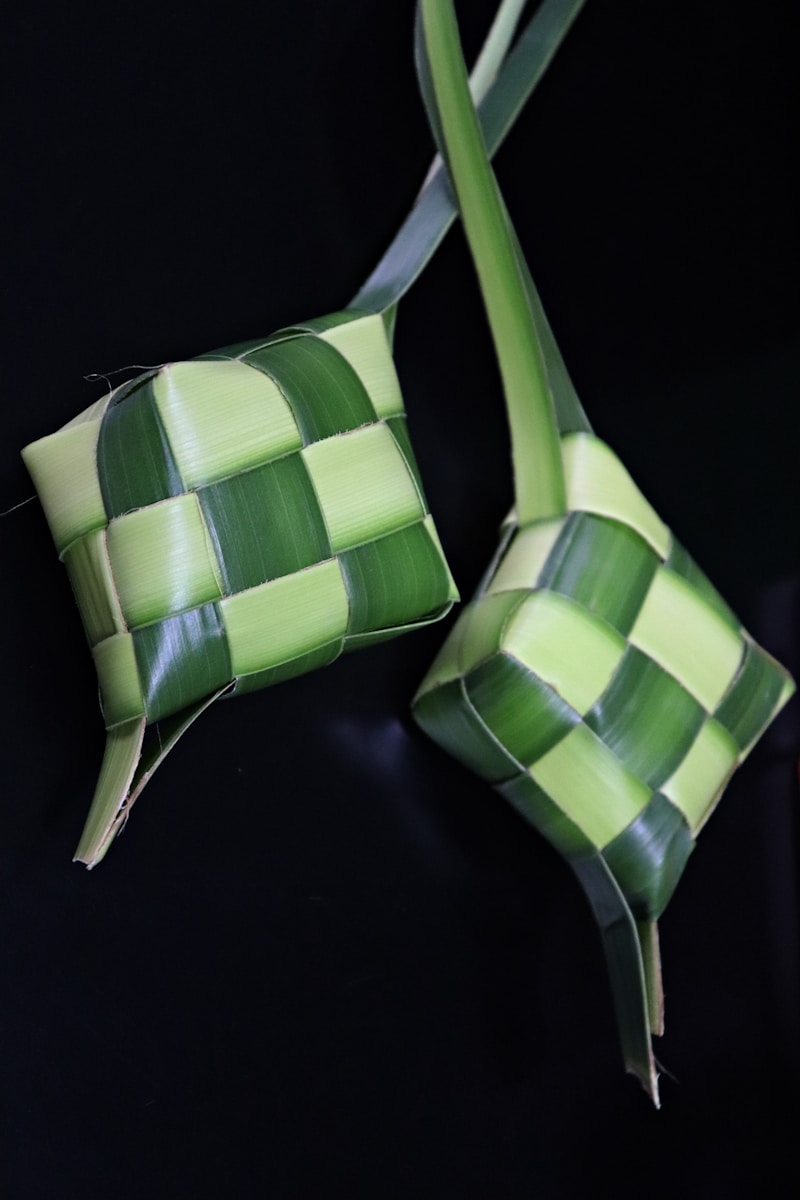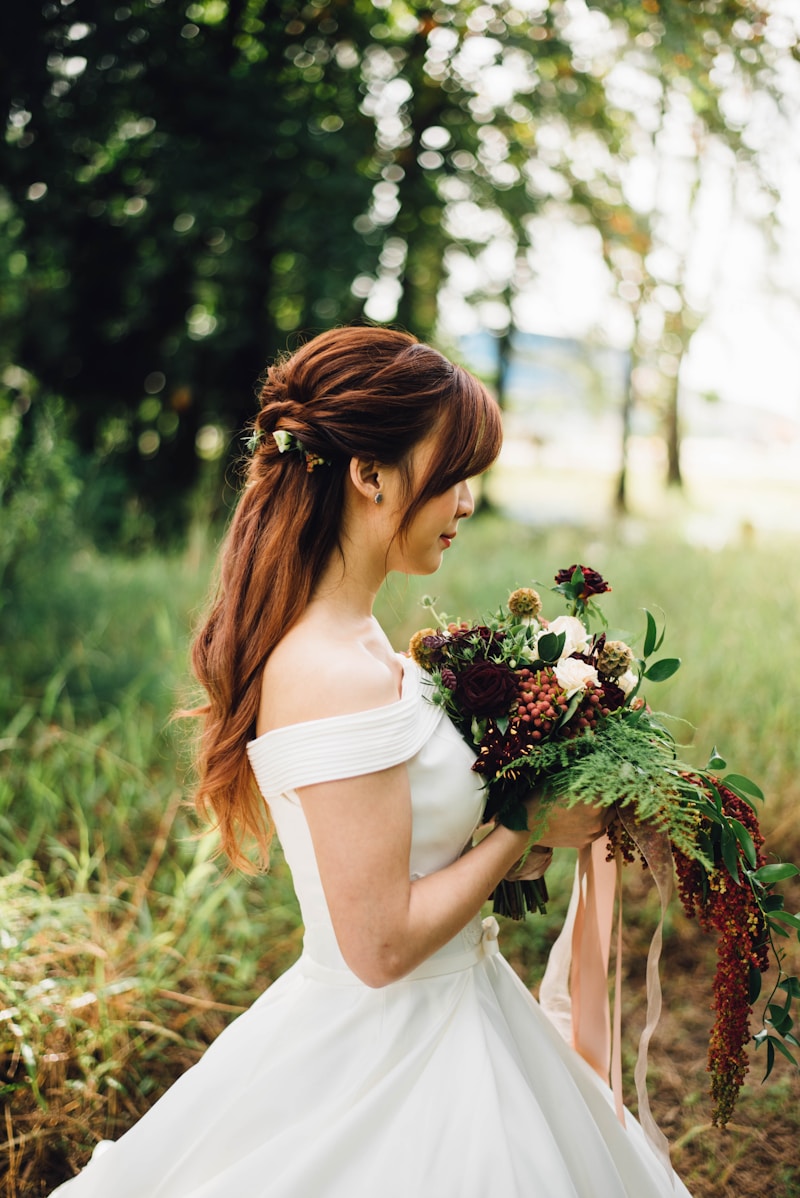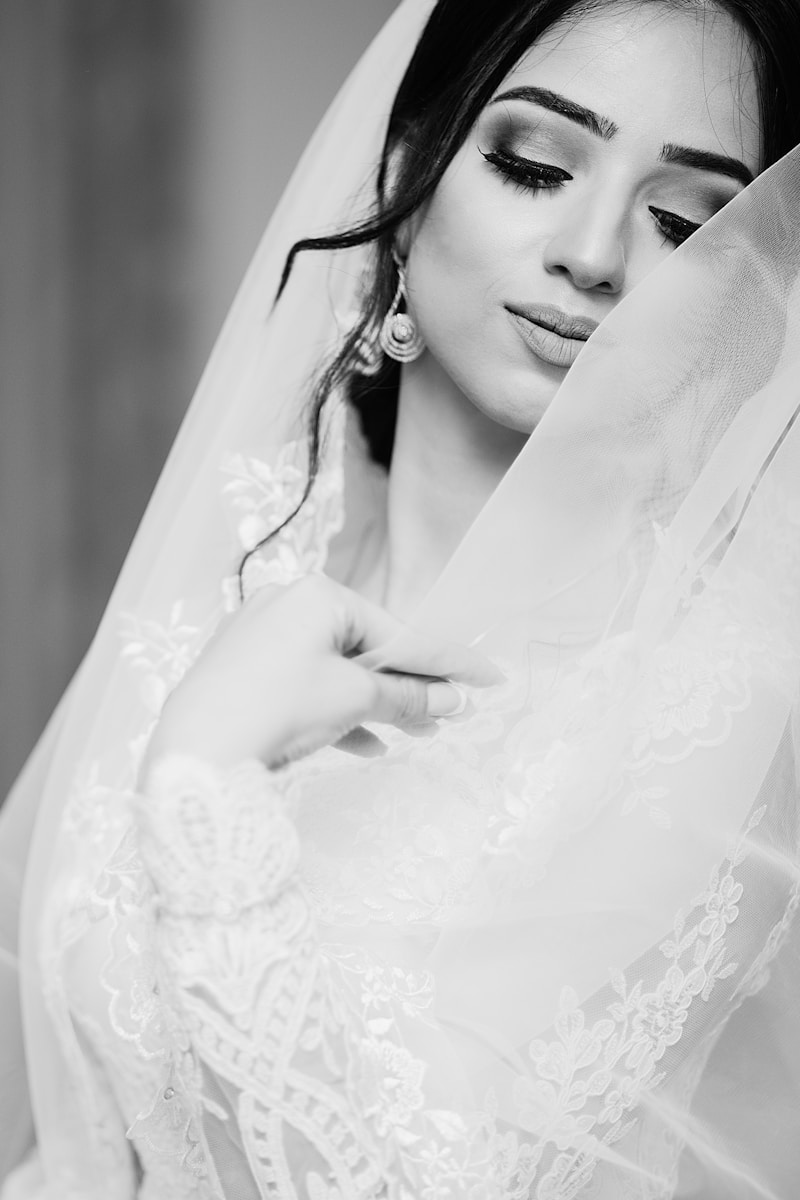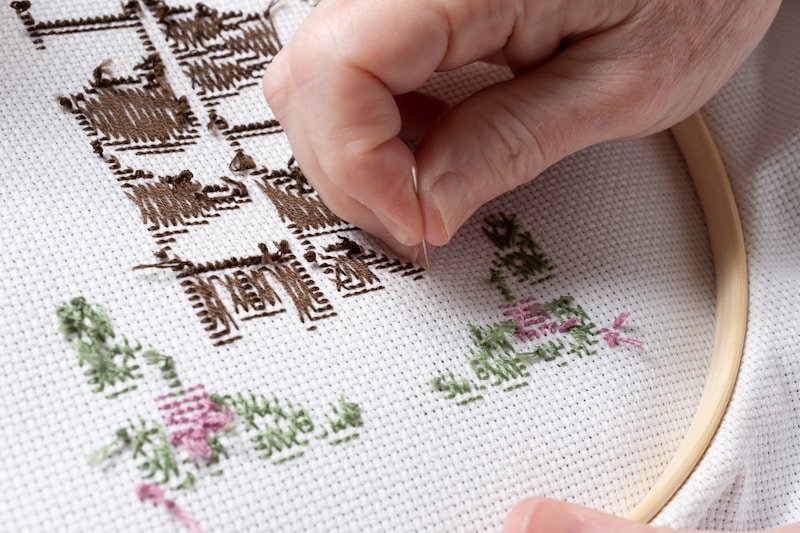Styling for Unique Personalities: Discover Your Personal Style
Understanding Personal StyleIn today's world of fashion, the concept of personal style has evolved significantly. It's no longer about following trends; it's about expressing individual personalities through unique clothing choices. Whether you're flamboyant, minimalist, or eclectic, styling for unique personalities allows you to showcase who you truly are. This article will explore various ways to develop a personal style that resonates with your unique personality, along with tips, tricks, and suggestions. Why Personal Style MattersPersonal style is essential for several reasons: Self-Expression: Your clothing can express your inner self and make you feel confident. First Impressions: People often judge others based on their appearances, making style important for first impressions. Cultural Identity: Clothing can reflect your culture and heritage, adding a layer of depth to your personal style.Identifying Your Personality TypeThe first step in styling for unique personalities is to understand what personality type resonates with you. Multiple frameworks exist, such as the Myers-Briggs Type Indicator (MBTI) or even astrology. Here’s a brief overview of personality types related to style:Personality TypeStyle CharacteristicsCreativeBold colors, mixed patterns, and unconventional accessories.ClassicTimeless pieces, neutral colors, and elegant silhouettes.EclecticA mix of styles, bright colors, and unique vintage finds.MinimalistSimplistic designs, neutral palette, an...
Exploring Transitional Styles: Bridging Tradition and Modernity in Design
In the world of design, whether it be interior design, fashion, or architecture, Transitional Styles play an essential role in combining the best elements of traditional and contemporary aesthetics. This article will delve into the characteristics, benefits, and considerations of transitional styles, providing insights for anyone looking to blend these two design philosophies seamlessly.What Are Transitional Styles?Transitional styles are a design approach that harmoniously merges traditional and modern elements. The aim is to create a balanced and comfortable environment that respects classic forms while embracing contemporary sensibilities. Transitional design is evident in various fields, including home decor, clothing, and even graphic design.Characteristics of Transitional StylesTransitional styles are defined by several key characteristics: Neutral Color Palettes: Most transitional spaces utilize a neutral color scheme, featuring shades like beige, gray, and taupe with pops of color for emphasis. Mix of Textures: A variety of textures, such as smooth fabrics, rough wood, and metal finishes, combine to enhance visual interest without overwhelming the senses. Streamlined Furniture: Furniture in transitional design typically features clean lines and simple shapes, avoiding overly ornate details from traditional styles. Classic Patterns with Modern Twist: While traditional patterns like florals or stripes are used, they are often presented in more contemporary colors or...
Transcending Trends: How to Stay Ahead in a Rapidly Changing World
Introduction to Transcending TrendsIn today’s fast-paced society, trends come and go with astounding rapidity. From fashion and technology to business practices, keeping up can feel like a challenge. Yet, some individuals and organizations have managed to transcend these fleeting trends, establishing lasting influence and integrity. This article delves into the concept of "Transcending Trends," exploring how to cultivate a mindset that not only adapts to change but also remains resilient in the face of evolving circumstances.What Does it Mean to Transcend Trends?Transcending trends refers to the ability to look beyond what is currently popular or in vogue and to instead focus on timeless principles and values. This approach allows individuals and organizations to innovate while maintaining core beliefs. Below is a comparison of trending versus transcending attributes:Trending AttributesTranscending AttributesShort-lived popularityTimeless relevanceReactive to changeProactive in innovationFickle audience engagementDedicated community buildingSurface-level understandingDeep-rooted insightsKey Areas Where Trends Can Be TranscendedTo better understand how to transcend trends, it is essential to explore specific areas where this principle applies:1. Business PracticesMany businesses pivot towards what is trending in their industries, which can often lead to short-term gains followed by inevitable declines. Instead, business leaders should focus on sustainable practices that priori...
Understanding Dress Code Considerations: A Complete Guide
Introduction to Dress Code ConsiderationsIn professional, educational, and social settings, dress codes play a crucial role in establishing norms and expectations. Understanding dress code considerations is essential for both individuals and organizations. This article aims to explore the various aspects of dress codes, including their importance, different types, and how to adhere to them effectively. Whether you're preparing for a job interview, a wedding, or a casual outing, knowing how to dress appropriately can significantly influence your experiences and interactions.Why Dress Code MattersDress codes are not arbitrary restrictions; they serve several important purposes: Establish Professionalism: In the workplace, dress codes establish a standard of professionalism which can enhance the company's image. Encourage Inclusivity: Appropriate dress codes encourage a sense of belonging by fostering an inclusive environment. Promote Safety: In certain industries, specific attire is necessary for safety, such as uniforms in healthcare or construction. Reflect Cultural Values: Dress codes can reflect the cultural values of a community or organization, enhancing shared identity.Types of Dress CodesDress codes can vary widely based on context. Here are some common types:Type of Dress CodeDescriptionBusiness FormalTypically requires suits for men and formal dresses or suits for women.Business CasualCleans up the traditional business attire; no ties are required, but neatness is...
Make a Bold Statement: The Power of Statement Pieces in Fashion
Understanding Statement PiecesIn the world of fashion, statement pieces are more than mere clothing items; they are powerful tools that allow individuals to express their personal style and make memorable impressions. Whether you are dressing for a formal event, a casual outing, or an important business meeting, statement pieces can elevate your look and convey confidence.What Are Statement Pieces?Statement pieces refer to standout items in a wardrobe that draw attention and serve as focal points in an outfit. These can include unique accessories, bold prints, striking colors, or oversized garments. The essence of a statement piece lies in its ability to reflect the wearer's personality and taste while showcasing creativity and flair.Why Statement Pieces MatterIncorporating statement pieces into your wardrobe is crucial for several reasons:Personal Expression: Statement pieces offer a canvas for self-expression, allowing individuals to showcase their unique style.Conversation Starters: Bold and distinctive items often attract compliments and spark conversations, making them great for social gatherings.Versatility: Some statement pieces can transform a simple outfit into a stunning ensemble, providing versatility for different occasions.Choosing the Right Statement PieceChoosing the right statement piece depends on your personal style and what message you want to convey. Here are some tips to guide you:Know Your Style: Consider your wardrobe's overall aesthetic. Are you drawn ...
Exploring the Fashion Evolution in Bridal Wear: A Journey Through Time
Bridal wear has transformed dramatically over the years, evolving from traditional designs to modern silhouettes that embrace individuality and cultural diversity. This article delves deep into the fashion evolution in bridal wear, highlighting key trends, historical milestones, and cultural influences that have shaped wedding attire across the globe. Whether you're a bride-to-be searching for inspiration or simply interested in fashion history, this comprehensive guide will offer you valuable insights.The Historical Context of Bridal WearHistorically, bridal wear has varied significantly across different cultures and time periods. In ancient times, brides typically wore their best dresses, often in colors like red, which symbolized joy and fertility. The evolution of bridal wear can be traced back to various factors, including social class, religion, and geographical location. Understanding these historical contexts will enhance your appreciation of modern bridal fashion.The Victorian InfluenceThe Victorian era marked a pivotal moment in bridal fashion. Queen Victoria, who married Prince Albert in 1840, chose to wear a white lace dress, defying traditional colors such as red or gold. This bold choice revolutionized bridal fashion, making white the color of choice for many brides in Western cultures. Below is a summary of the Victorian bridal wear trends:EraColor PatternsMaterials UsedNotable FeaturesVictorian EraWhite became a popular choiceLace, silk, and satinCorset bodice...
Exploring the Impact of Bold Color Choices in Modern Design
Introduction to Bold Color ChoicesIn the rapidly evolving world of design, one factor that stands out as a primary driver of aesthetic appeal is the bold color choices made by designers. Whether in fashion, interior design, or digital media, colors play a pivotal role in shaping perceptions, evoking emotions, and communicating brand identity. This article will delve deep into the significance of bold color choices, exploring their implications, psychological effects, and practical applications across various domains.The Psychology of ColorColor psychology is a crucial element that drives the importance of bold color choices. Different colors evoke different feelings and reactions. For instance:ColorEmotionRedPassion, Energy, ActionBlueTrust, Calmness, StabilityYellowHappiness, Creativity, OptimismGreenNature, Growth, FreshnessPurpleLoyalty, Luxury, AmbitionBlackElegance, Power, MysteryUnderstanding these associations is fundamental for designers aiming to make impactful bold color choices. By aligning their color palettes with the emotions they wish to elicit, brands can create more meaningful connections with their audiences.The Role of Bold Color Choices in BrandingIn the competitive landscape of marketing, brands strive to differentiate themselves. Bold colors are an effective way to achieve this. Companies like Netflix utilize a bold red that signifies excitement and energy, making their brand instantly recognizable. Similarly, McDonald's iconic yellow and red combination...
Unlocking Your Style: The Rise of Innovative Cuts in Fashion
In today’s fast-paced world, keeping up with evolving fashion trends can be challenging. One significant trend making waves is the concept of Innovative Cuts. This article delves into the essence of innovative cuts, how they can transform your look, and why they are becoming increasingly important in fashion. What Are Innovative Cuts? Innovative cuts refer to unconventional and creative techniques in garment design that challenge traditional styles. These cuts often involve unique shapes, asymmetry, and unexpected elements, pushing the boundaries of standard tailoring. Designers worldwide are employing these innovative techniques to create statement pieces that embody individuality and creativity. Why Innovative Cuts Are Important Innovative cuts have emerged as essential in the fashion landscape for several reasons: Personal Expression: Innovative cuts allow individuals to express their unique personalities and styles, offering options beyond mainstream trends. Versatility: These cuts can be applied to various types of clothing, from dresses and tops to outerwear and even accessories, making them versatile for different occasions. Sustainability: Innovative cuts often prioritize sustainable practices, leading to the creation of timeless pieces that transcend seasonal trends. Types of Innovative Cuts Understanding the different types of innovative cuts can inspire you to explore your unique style. Below are some popular categories: Type of Cut Description ...
Unlocking the Power of Personalization: How to Customize Your Experience
Introduction to Customized ExperiencesIn today’s fast-paced world, the concept of customizing your experience is more prevalent than ever. Consumers are no longer satisfied with generic offerings; they crave personalized solutions that resonate with their preferences and lifestyles. Whether it's in retail, travel, or technology, the ability to customize your experience can significantly enhance satisfaction and engagement. This article delves into methods and strategies to effectively customize your experience in various domains.What Does It Mean to Customize Your Experience?Customizing your experience refers to the process of personalizing interactions, products, and services based on individual preferences and behaviors. This can range from configuring your shopping experiences to tailoring your travel itinerary or even personalizing your digital tools and services. Understanding this concept can transform how you engage with brands and services.The Importance of Customization in Different IndustriesCustomization plays a vital role across various industries. Here are some key sectors where customization is particularly impactful:IndustryExamples of CustomizationBenefitsRetailPersonalized product recommendationsIncreased customer satisfactionTravelCustomized vacation packagesEnhanced travel experienceTechnologyTailored software settingsImproved usabilityHow to Customize Your Experience in RetailThe retail industry has embraced personalization through various channels, includ...
Mastering Groom's Attire Coordination for the Perfect Wedding Day
Understanding Groom's Attire CoordinationWhen it comes to weddings, the spotlight often shines on the bride, but the groom's attire coordination is equally vital in creating a cohesive and stunning visual aesthetic. Properly aligning the groom's attire with the overall theme and color palette of the wedding can enhance the day’s elegance and ensure that every detail shines. This article delves deep into the world of groom's attire coordination, offering valuable insights and practical tips for grooms-to-be.The Importance of Groom's Attire CoordinationCoordinating the groom's attire is not just about looking sharp; it’s about crafting a unified look that compliments the wedding party and reflects the couple’s personal style. Here are some reasons why it is crucial: Visual Cohesion: A well-coordinated groom's outfit helps create seamless visuals during the ceremony and the reception. Reflecting Personality: The groom's attire can reflect his character, thereby adding a personal touch to the day. Photogenic Appeal: Complementary styles and colors lead to stunning photography that captures the essence of the day.Key Elements in Groom's Attire CoordinationWhen planning the groom’s outfit, several critical elements come into play:1. Color PaletteThe wedding color palette should guide the groom’s attire choices. The bride’s dress typically sets the tone, so consider factors such as: ♦ Matching the bridesmaid dresses ♦ Coordinating with decor elements ♦ Including th...
Exploring Historical Inspirations: Unraveling the Threads of Time
In today's fast-paced world, the past often serves as an incredible source of inspiration for various realms, be it art, literature, design, or even personal development. Historical inspirations can guide creatives and thinkers alike, shaping their ideas and informing their practices. This article explores how historical inspirations manifest in different fields, the significance of understanding our past, and ways to effectively harness these inspirations.Understanding Historical InspirationsHistorical inspirations signify the influences drawn from past events, cultures, and figures. They can lead to innovative concepts while paying homage to earlier traditions. From Renaissance artwork to ancient philosophies, understanding historical inspirations allows us to appreciate broader narratives and connect them with contemporary issues. Below is a summary table showcasing various fields influenced by historical inspirations:FieldHistorical InspirationsModern ApplicationsArtRenaissance, ImpressionismContemporary art movementsLiteratureGreek Tragedy, Victorian NovelsModern storytelling techniquesFashionVictorian Era, Roaring TwentiesCurrent fashion trendsArchitectureRoman Empire, Gothic RevivalEco-friendly building practicesPersonal DevelopmentStoicism, Eastern PhilosophiesSelf-help & mindfulnessThe Impact of Historical Inspirations in Various FieldsArtArt is one of the clearest fields where historical inspirations can be seen. The techniques, themes, and processes from historical...
Curating Your Collection: The Ultimate Guide to Creating an Impressive Collection
Understanding the Art of Curating Your CollectionCurating your collection is more than just gathering items that you find interesting; it's about creating a cohesive narrative or theme that reflects your personality and values. Whether you’re collecting art, antiques, books, or a niche hobby, having a well-thought-out collection can be both fulfilling and impressive. In this guide, we will explore the various aspects of curating your collection, tips for enhancing its quality, and ways to maintain and showcase your collection effectively.Why Curating Your Collection MattersCurating a collection allows you to engage deeply with your passions. It transforms simple collecting into a purposeful endeavor. Some benefits include: Establishing personal identity Creating a sense of achievement Improving aesthetic appeal Possibly increasing value over time Fostering connections within a community of collectorsFactors to Consider When Curating Your CollectionBefore diving into curating your collection, consider the following factors: Factor Description Theme Choose a central theme that resonates with you, such as vintage items, modern art, or rare books. Quality vs. Quantity Focus on acquiring high-quality items that contribute meaningfully to your theme rather than simply amassing a large number. Budget Determine how much you can spend to avoid overspending while building your collection. Display Think about how you’ll display your collection, as this can affect its over...
Seductive Silhouettes: Unveiling the Allure of Confidence and Beauty
Introduction to Seductive SilhouettesIn the world of fashion and personal style, the term Seductive Silhouettes evokes imagery of elegance, confidence, and allure. This concept goes beyond mere aesthetics; it represents a profound understanding of one's body shape and how to accentuate it. Through the perfect combination of clothing styles, colors, and accessories, anyone can create their own unique and seductive silhouette.What Are Seductive Silhouettes?Seductive silhouettes are defined by the way clothing interacts with the body’s natural contours. They emphasize features while providing a flattering look that can boost confidence and make a lasting impression. Embracing one’s unique shape and choosing pieces that enhance it can truly unlock the potential of seductive silhouettes. Types of Seductive SilhouettesThere are various types of silhouettes that can be categorized based on body shapes. Understanding these can help individuals select outfits that best meet their needs:Body ShapeSilhouette TipsHourglassOpt for fitted dresses that highlight the waist.AppleA-line dresses can create a balanced look.PearChoose tops that draw attention upwards.RectangleBelted styles can define the waist effectively.Inverted TriangleFlowy skirts can soften the upper body.Materials That Enhance Seductive SilhouettesThe choice of fabric is pivotal in creating a seductive silhouette. Here are some materials that work wonders:Silk: Adds a luxurious touch and flows beautifully.Lace: Provides tex...
Cascading Trains: Understanding the Fascinating Synchronization of Train Schedules
Introduction to Cascading TrainsHave you ever wondered how trains manage their schedules to ensure timely arrivals and departures? The concept of Cascading Trains focuses on the synchronized operation of train services that maximize efficiency while minimizing delays. This article delves into the intricacies of cascading train schedules, their significance in urban transportation, and how they can be optimized further.What are Cascading Trains?Cascading trains refer to the systematic management of train schedules such that the timely arrival of one train directly influences the departure and arrival of subsequent services. This synchronization creates a cascading effect, improving overall efficiency and reducing waiting times for passengers. The core idea is that when one train arrives on time, it can facilitate the on-time departure of the next service in the network. Conversely, delays in one service can result in a chain reaction affecting multiple other trains.The Importance of Cascading Train SystemsIn today’s fast-paced world, the need for efficient public transport systems has never been more critical. Cascading trains play an indispensable role in urban transportation for several reasons: Passenger Satisfaction: Timely departures and arrivals ensure customers remain happy and are more likely to use public transport. Resource Optimization: Efficient train scheduling leads to optimal utilization of resources, including trains, staff, and infrastructure. Reduced Conge...
Mixing Tradition with Modernity: A Harmonious Blend of the Old and New
IntroductionIn our rapidly evolving world, the concept of "Mixing Tradition with Modernity" has become increasingly relevant. This synthesis not only respects historical values but also embraces the innovations that come with modern advancements. Many cultures around the globe illustrate this fascinating interplay, paving the way for a future that honors the past while looking forward. In this article, we delve deep into how various societies integrate traditional practices with contemporary approaches, highlighting the benefits, challenges, and examples of this beautiful duality.The Essence of TraditionTraditions form the backbone of cultural identities. They encompass practices, beliefs, and values passed down through generations. For instance, in regions like Japan, traditional tea ceremonies depict not only the art of brewing tea but also emphasize values such as respect, mindfulness, and hospitality. These traditions provide a sense of belonging and continuity for communities.Why Preserve Tradition?Preserving tradition is essential for many reasons: Identity: Cultural practices foster a sense of identity within a community. Wisdom: Traditional knowledge can offer solutions to modern problems. Community: Engaging in traditional practices helps strengthen bonds among community members.The Modern LandscapeModernity, characterized by rapid technological advancements and globalization, brings about significant changes to daily life. In this context, the integration o...
Essential Wedding Gown Conservation Techniques for Long-lasting Memories
Introduction to Wedding Gown Conservation TechniquesYour wedding gown represents one of the most cherished moments in your life. Preserving this significant piece of clothing can be crucial for maintaining its beauty and integrity over the years. In this article, we will explore effective wedding gown conservation techniques that can help ensure your gown remains as stunning as the day you wore it. Furthermore, we will address common concerns regarding wedding gown preservation and provide insightful tips on how to care for your treasured garment.Understanding the Importance of ConservationWedding gowns are often made from delicate fabrics like silk, satin, and lace, which may fade, tear, or discolor if not properly cared for. Not only is the emotional value of a wedding gown significant, but the financial investment can also be substantial. Thus, understanding the importance of conservation techniques can help protect both your memories and your investment.Common Concerns About Wedding Gown PreservationBefore delving into conservation techniques, let's discuss some common concerns that brides have regarding their wedding gowns:Stains and Discoloration: Food, makeup, and even perspiration can lead to stains that may become permanent if not treated promptly.Storage Conditions: Improper storage can cause fabric deterioration, yellowing, and the growth of mold.Future Wear: Some brides wish to pass down their gowns to future generations, making preservation even more important.Ef...
Long-Term Preservation of Bridal Attire: A Comprehensive Guide
Introduction to Bridal Attire PreservationBridal attire holds significant emotional value, representing a pivotal moment in a person’s life. The desire to keep these garments pristine for decades, whether for future generations or personal nostalgia, is growing among brides worldwide. This guide will delve into effective methods for the long-term preservation of bridal attire, ensuring that these delicate fabrics withstand the test of time, while also addressing common queries related to bridal gown maintenance.Understanding the Importance of PreservationBridal gowns and attire are often crafted from luxurious materials such as satin, lace, chiffon, and silk, which can be vulnerable to various environmental factors. Proper preservation can prevent deterioration caused by light, moisture, and pests. Here are a few reasons why long-term preservation is crucial: Sentimental Value: Many brides cherish their attire as a representation of love and commitment. Generational Heirlooms: Preserved bridal wear can become a cherished family heirloom. Resale Value: Well-preserved gowns hold significant resale value, should the bride choose to part with them.How to Properly Preserve Bridal AttireNow that we understand the importance of preservation, let’s explore practical steps to ensure your bridal gown remains in pristine condition.1. Clean Before StoringCleaning is imperative since stains can set in over time. Here are some crucial points: Professional Cleaning: Always opt f...
Optimal Storage Methods for Delicate Fabrics: A Comprehensive Guide
When it comes to preserving the beauty and longevity of delicate fabrics, the importance of optimal storage methods cannot be overstated. Whether you're dealing with silk, lace, or fine wool, the right techniques are essential to prevent damage and maintain the integrity of these materials. This article will delve into effective storage methods, common mistakes to avoid, and tips to ensure your cherished textiles remain in excellent condition.Understanding Delicate FabricsDelicate fabrics include a wide range of materials that require special care. These fabrics are often more prone to wear and tear, color fading, and damage from environmental factors. Popular types of delicate fabrics include:Fabric TypeCharacteristicsSilkSoft, smooth, and luxurious; sensitive to moisture and sunlight.LaceIntricate, open weave; easily snags and tears.ChiffonVery lightweight; can be easily stretched or damaged.CashmereSoft and warm; easily pilled and susceptible to moth damage.Vintage FabricsMay have specific requirements depending on age and composition.Optimal Storage MethodsTo ensure your delicate fabrics remain pristine, consider the following optimal storage methods:1. Clean Before StoringAlways clean your delicate fabrics before storage. Dust, sweat, and oils attracted to the fabric can lead to deterioration over time. Follow the care label instructions for washing and drying. If in doubt, professional cleaning is a wise choice.2. Use Appropriate Storage ContainersStore delicate fabrics...
Restoring Vintage Wedding Dresses: A Timeless Journey
Vintage wedding dresses possess an undeniable charm and nostalgia, capturing the beauty of bygone eras. Restoring these enchanting garments not only revives their splendor but also connects us to the traditions and stories of the past. This article will delve into the intricacies of restoring vintage wedding dresses, guiding you through the process while providing valuable insights and tips for success.The Allure of Vintage Wedding DressesThese garments often come with rich history and craftsmanship, making them unique pieces of art. Many brides seek vintage wedding dresses for their:Timeless designs: Each era has its signature style, from the flapper dresses of the 1920s to the romantic silhouettes of the 1950s.Materials and craftsmanship: Vintage dresses were often made with high-quality fabrics and meticulous detailing that can be rare in contemporary fashion.Sentimental value: Wearing a dress that belonged to a family member or friend adds a personal touch to the wedding.Understanding the Restoration ProcessRestoring a vintage wedding dress requires careful consideration and expertise. Below are the key steps involved in the restoration process:StepDescription1. AssessmentExamine the dress for damages such as tears, stains, or fabric deterioration.2. CleaningSelect an appropriate cleaning method based on the fabric type and condition.3. RepairsFix any damage, including sewing up tears, replacing broken zippers, or mending seams.4. AlterationsMake adjustments for fit or to...
Protecting Lace and Embroidery from Damage: Essential Tips and Techniques
Understanding the Importance of ProtectionLace and embroidery are timeless and beautiful art forms that adorn garments, home decor, and various textiles. However, these delicate materials require special care to prevent damage and prolong their exquisite beauty. Whether passed down through generations or newly crafted, lace and embroidery hold sentimental and monetary value. In this guide, we will explore effective strategies for protecting these treasures from damage, ensuring they remain vibrant and intact for years to come.Common Causes of DamageBefore we delve into protective measures, it is crucial to understand the common threats that can lead to the deterioration of lace and embroidery. Here are some of the primary culprits:Damage CauseDescriptionExposure to sunlightDirect sunlight can fade colors and weaken fibers, especially for delicate textiles.Improper cleaning methodsUsing harsh detergents and vigorous washing can ruin the integrity of the fabric.Moths and pestsInsects can cause irreparable damage to lace and embroidered pieces if not controlled.Moisture and humidityExcessive moisture can lead to mold growth and fabric decay.Physical abrasionRubbing against rough surfaces can fray threads and tear delicate materials.Best Practices for ProtectionNow that we understand what can cause damage to lace and embroidery, let’s explore effective practices for preservation.1. Proper Storage TechniquesHow you store lace and embroidery plays a significant role in their longev...
